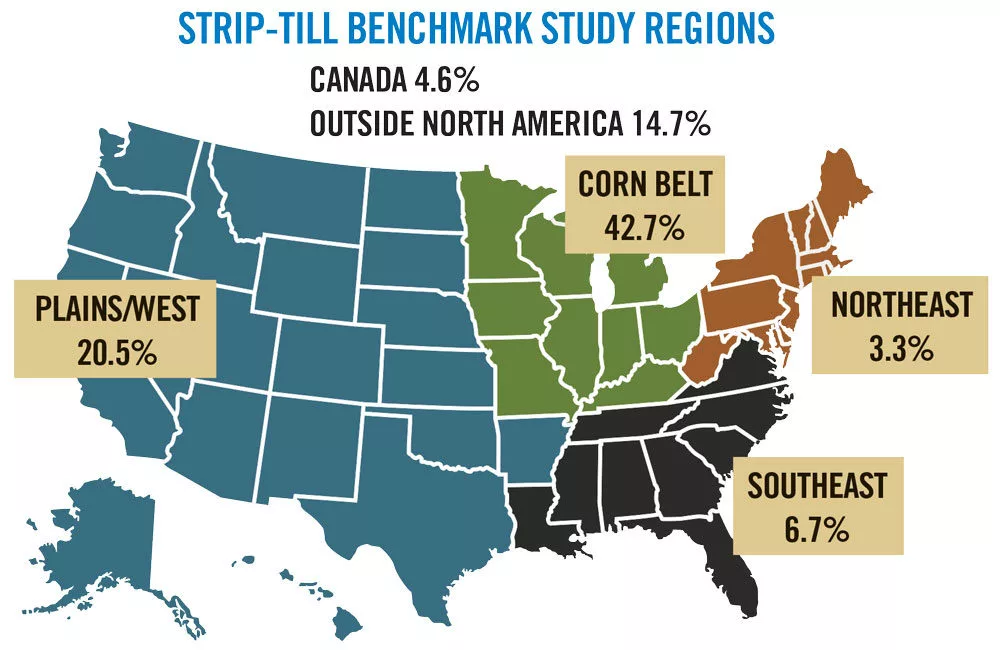Pictured Above: BRANCHING OUT. While the Corn Belt maintained its stronghold with more than 42% of strip-tillers located in the central part of the U.S., the plains and western states were well-represented, stretching from California to Texas.
Results of the 7th Annual Strip-Till Operational Practices Benchmark study, evaluating 2019 cropping practices, saw some subtle and more significant shifts in strip-till practices. Average strip-tilled corn yields topped 200 bushels per acre for the third straight year, while soybean yields remained north of 60 bushels per acre.
More than 300 farmers from 35 states who identified themselves as strip-tillers responded to the 50-question survey from Strip-Till Farmer.
Editors compared and contrasted equipment setups, berm-building preferences, nutrient management strategies and more that strip-tillers are putting to work on their operation.
Once again, the core of strip-tillers came from the central U.S., with more than 42% located in the Corn Belt states, and another 20% from the Plains or Western states.
Some 21.6% indicated that 2019 was their first year strip-tilling, while more than 40% said they’ve been strip-tilling less than 5 years and more than 70% adopted the practice a decade ago or less. About 17% of respondents have been strip-tilling more than 15 years.
Looking at total cropping acres, the average farm size shrunk a bit in 2019, with more than half of respondents indicating they farm 1,000 or fewer acres (52%), compared to 38.5% in 2018. However, the percentage of respondents farming more than 5,000 acres increased slightly, from 3% in 2018 to 4.8% in 2019.
The average acreage being strip-tilled continued a downward trend in 2019, with respondents reporting 719 acres per farm of strip-tilled corn, down from 780 in 2018 and a high of 921 in 2017. Strip-tilled soybean acres also trended down, with an average of 464 in 2019 compared to 517 in 2018 and a high of 552 in 2017.
Check out more information on strip-till adoption trends and past benchmark study analysis and results here.

FALLING OFF. With a wet — and in many areas — delayed harvest in 2019, there was a nearly 15% drop in fall strip-till which correlated with increased berm building in spring or a move by some traditional fall strip-tillers to possibly follow a fall pass with another one ahead of planting.

PACING PRECISION. Adoption of unmanned aerial vehicles and implement guidance increased in 2019 over the prior year, while the lowest percentage of respondents since 2014 said they utilized RTK-level GPS correction.




![[Technology Corner] A Big Step Forward for Interoperability & Data Sharing](https://www.precisionfarmingdealer.com/ext/resources/2025/12/12/A-Big-Step-Forward-for-Interoperability--Data-Sharing.webp?height=290&t=1765565632&width=400)


